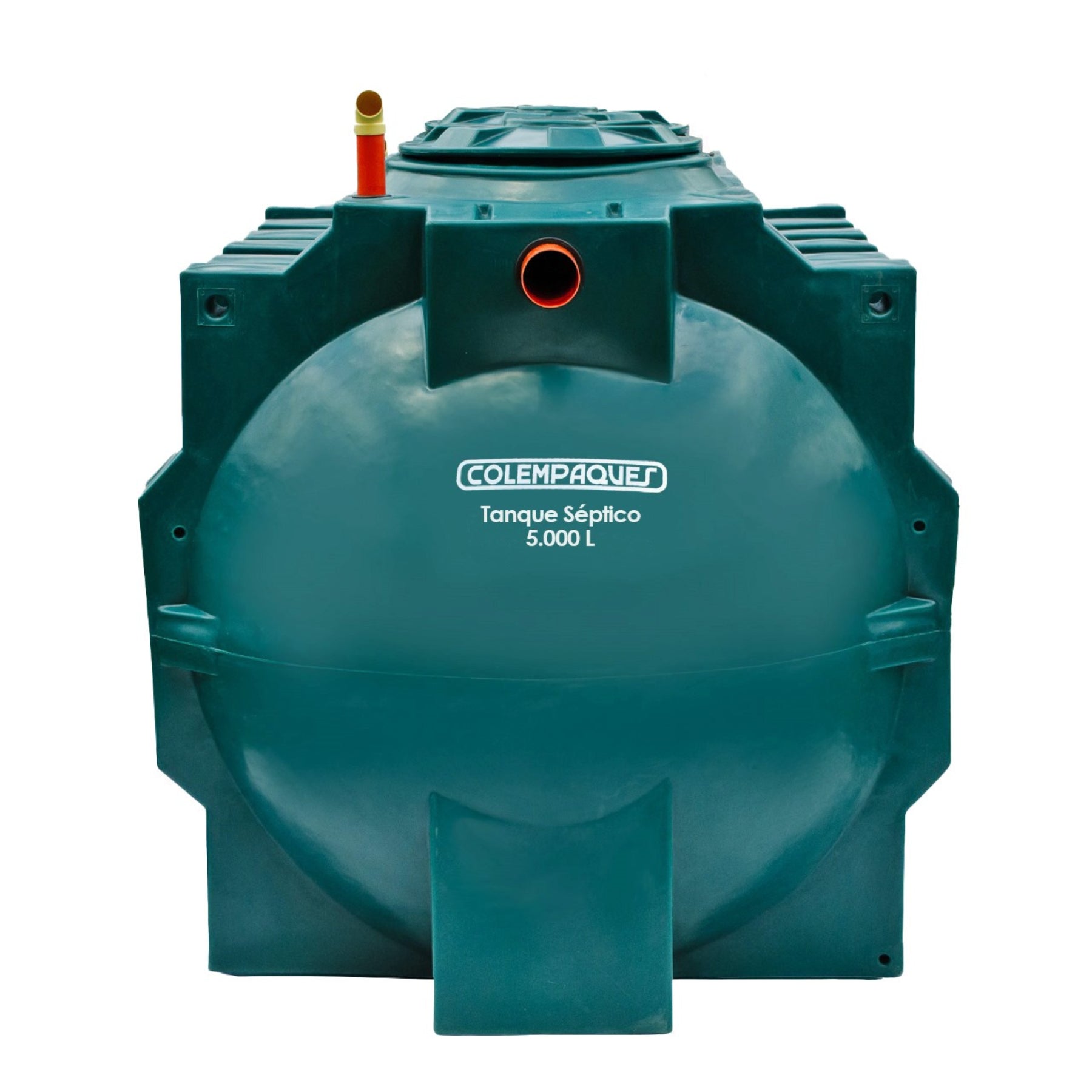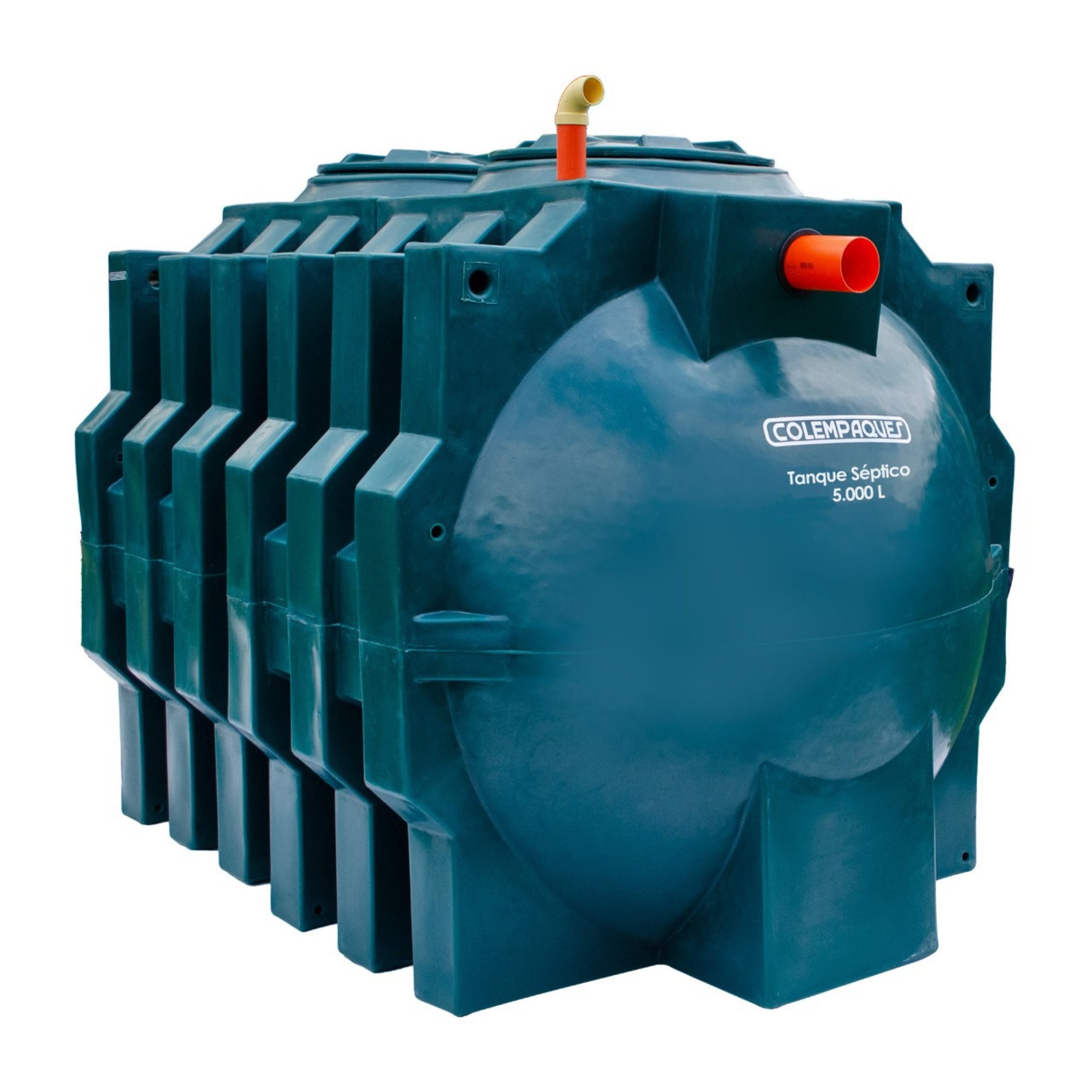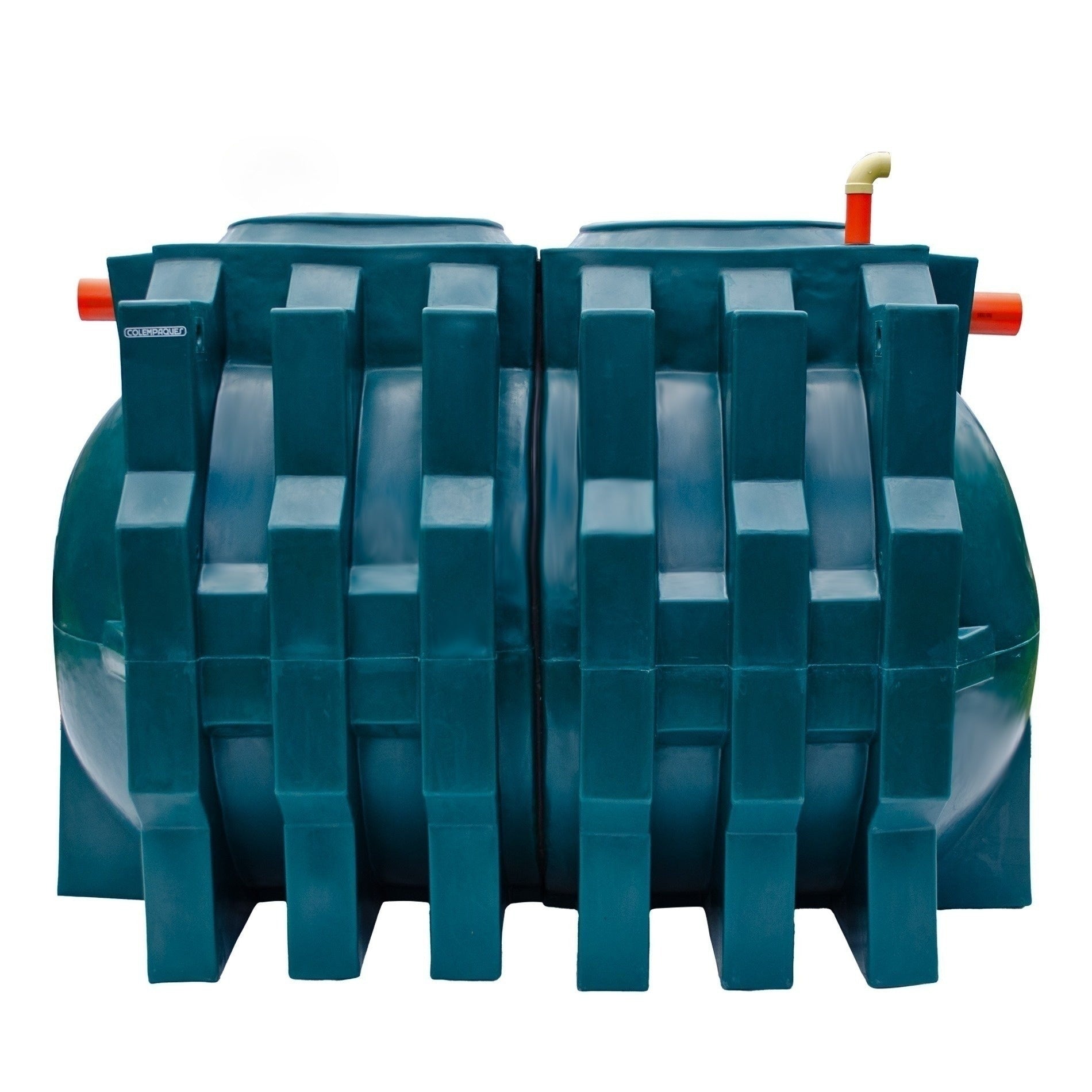SKU:
Tanque Septico IMHOFF Horizontal 5000 Litros
Nuestro Séptico Imhoff COLEMPAQUES Horizontal de 5.000 litros es la mejor solución para la primera y segunda fase de tu sistema de tratamiento de aguas residuales. Su diseño horizontal, con venas de refuerzo es estructural y lo hace resistente a las presiones externas del terreno. Por ende, es 100% enterrable y autoportante y no requiere de mampostería u obras complementarias para su instalación.
Conecta las tuberías provenientes de los sanitarios a este tanque Séptico Imhoff COLEMPAQUES y deja que las aguas negras comiencen su tratamiento a través de un proceso de separación y sedimentación. Incluye accesorio decantador, el cual facilita la separación de los sólidos en cuanto ingresan al séptico.
Gracias a su amplia capacidad en litros, el sistema permite unos excelentes tiempos de retención hidráulica, con lo cual se asegura una mejor separación y sedimentación de los sólidos. Una vez instalado, te recomendamos complementar tu sistema de tratamiento con un Filtro Anaeróbico COLEMPAQUES, en el cual se podrá realizar una segunda fase de tratamiento para la descomposición y digestión de las heces fecales.
Este producto es fácil de instalar y su mantenimiento es económico.
Cuenta con tapa amplia para aplicar tratamiento, disponer de agua y finalmente extraer lodos.
El producto nunca debe permanecer vacío mientras esté enterrado.
Additional product information
Shipping times
Our times are subject to destination and availability. You can check this at checkout.
In addition, you can consult your trusted specialist for installation services. We provide technical support to ensure your installation is a success.

Frequently Asked Questions
It is a wastewater pretreatment system used in places where there is no connection to a public sewer network.
The size is determined by the number of users that a septic system can support, which is variable and depends on multiple factors, such as water consumption or soil type.
We recommend that you consult a sanitary engineer or septic system specialist to perform the necessary calculations and design a system suitable to your needs.
Frequency may vary depending on factors such as system size, number of users, and usage.
Recommendations:
- Inspections: At least once a year to check the level of sludge and grease, and the general condition of the system.
- Cleaning: Every year, depending on the size of the tank and its use. This cleaning consists of removing accumulated sludge and grease.
To ensure the proper functioning of the bacteria in the septic system. There are black waters and grey waters:
Black water: This is all waste water that comes from toilets and dishwashers. The organic load contained is highly polluting, so water must be treated before filtering into the ground, in order to prevent damage to the subsoil or aquifers in the region. This water is what passes through the septic system.
Grey water: This is all waste water that comes from sinks, dishwashers and showers. It should not pass through the septic system due to its high content of antibacterial soaps that can harm the functioning of bacteria in the anaerobic filter.
- Bad odors: They can be caused by a problem in the tank, in the drain field or by lack of maintenance.
- Overflows: A full tank can cause overflows on the surface. Make sure you purchase a septic system with a larger capacity to ensure proper hydraulic retention times.
- Wet or waterlogged areas: May indicate a problem in the infiltration or drainage field.
- Chemicals: Harsh detergents, bleach, paints, solvents and other chemicals can kill beneficial bacteria in the tank.
- Fats and oils: Fats and oils solidify in pipes and can clog the system.
- Wet wipes: Although some are biodegradable, they can clog pipes.
- Feminine hygiene products: Should not be flushed down the toilet.






